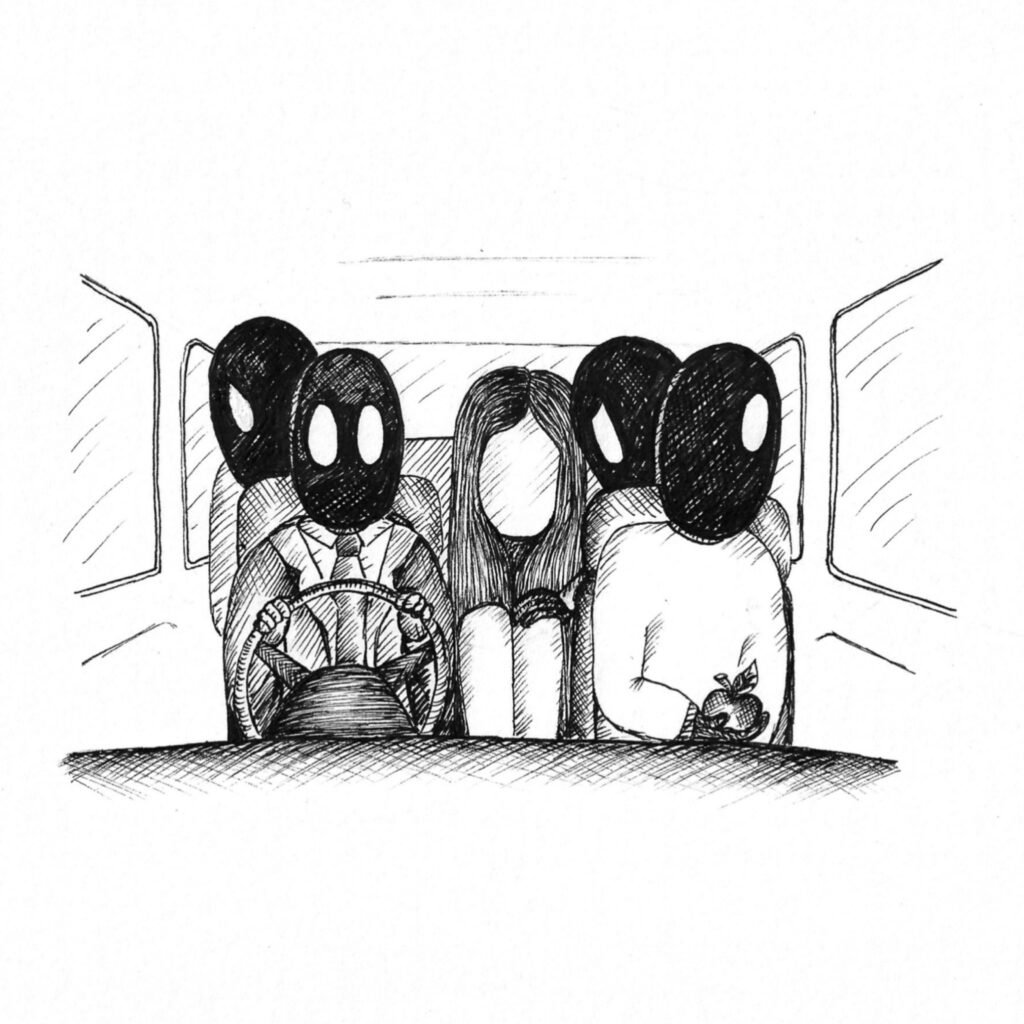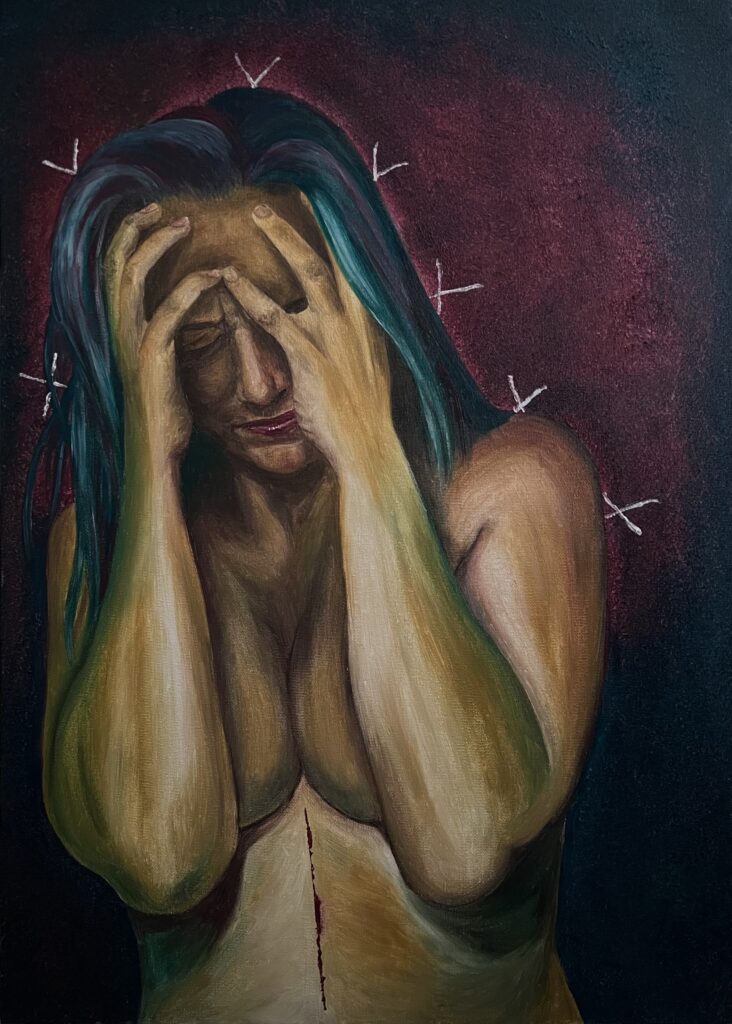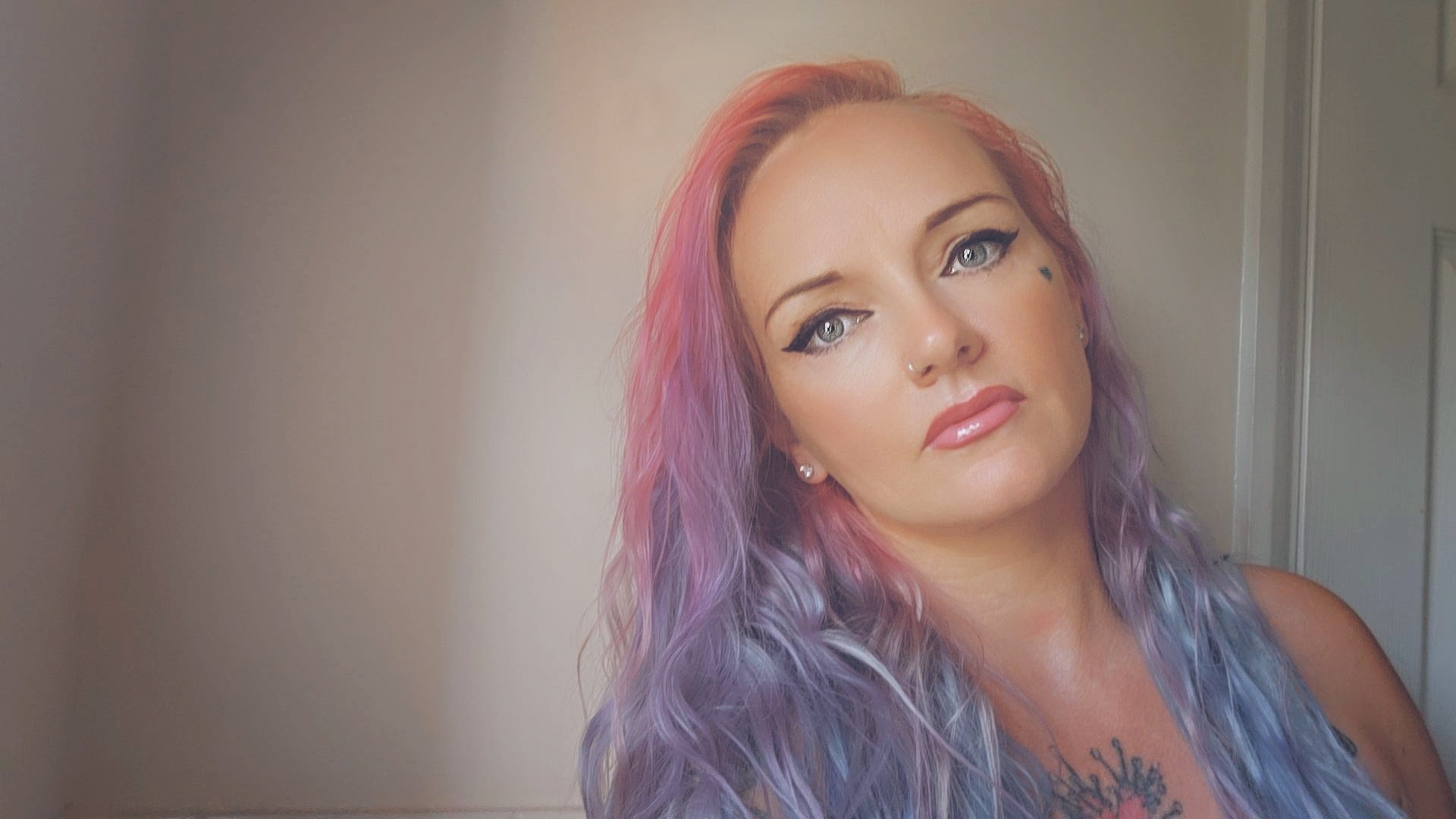In an era where words and images merge to tell profound stories, Kimberley Frances’s Applehead stands as a testament to the power of artistic expression in healing and self-discovery. The character Applehead, born from a deeply personal painting, becomes a mirror reflecting Kimberley’s own struggles and triumphs through her childhood and adolescence. With a blend of poignant illustrations and evocative poetry, Kimberley transforms her past pain into a powerful narrative of validation and understanding. In our interview, she opens up about the creative journey behind Applehead, the challenges of revisiting past traumas, and the cathartic process of expressing her emotions through art. Kimberley’s story is a powerful reminder that through creativity, we can find our voice, heal our wounds, and inspire others who are on their own paths of self-expression and recovery.
Can you share the inspiration behind your book, ‘Applehead’ and the character through whom you tell your story?
The character, Applehead, first appeared on a painting I completed in 2010. With the rising popularity of social media, particularly Facebook, seeing people from my past that I would usually have never encountered again, started to bring back uncomfortable memories of my school days. I’ve always found expressing myself through art much easier than through speech. An image is more direct, it silently goes straight to the mind of the viewer in a way conversation can’t. It was a small acrylic painting of myself in my school uniform, on a school field, underneath an apple tree. On the right side of the painting, it is a warm, summer’s day. I am on the left side where the sky is grey. I found myself looking at the painting and feeling a connection with the girl, it was like she was the only one who understood. I painted a second picture of another childhood experience, then switched to ink to continue getting all these tormenting moments out on to paper, to see her look back at me and validate my emotions, silently.
The inspiration for the name is simple – I was often insulted for having a round face and large forehead. One of the names I was called was Applehead. Also, because I love apples!
How did you decide to blend illustrated poetry with your personal experiences of childhood and adolescence?
The ink drawings were drawn sporadically over a very long period of time, usually when I felt very low – I’ve struggled silently with my mental health for as long as I can remember. One particular picture was really upsetting me and started to run over in my mind at idle times, usually when walking. I’ve always loved simple, rhyming poetry and as I walked, words started to form. The poems sounded dak, yet they were true events and I was beginning to find it very cathartic. I decided to write words to accompany every picture, almost like a form of exorcism.
What challenges did you face in revisiting your past experiences of neglect and abuse while creating ‘Applehead’?
Allowing myself to revisit events in detail through art came naturally. The illustrations were simply memories, drawn over a period of many years, at times when I felt low. However, the poems were created in a smaller time frame, so to really explore the emotions behind the illustrations was very difficult. To find the words, I had to relive the moment, and I found my mind sinking into a dark place, taking my whole being down with me. As a mother and wife this became quite challenging as it is hard to switch off and act ‘normal’ as and when needed.
How did writing and illustrating this book impact your healing journey and mental health?
The whole process has been very positive. It forced me to examine moments, some of which I had kept so deeply supressed that I had never fully admitted them to myself. It was a strange experience because I found myself realising events that I hadn’t forgotten – they were there all along. I’d just hidden them away, blanked them out. After completing the book, I felt validated. I still haven’t spoken about a lot of things, but now they’re there to be interpreted without the need for speech.

What does the character, ‘Applehead’, represent for you, and how does she convey your personal story?
For me, Applehead represents understanding. It is set in the nineties, so a lot of the events in the book are ones that would be dismissed at the time. In reality, some of the incidents were brought to light and passed off, so she is helpless in her world, but she looks out at me, and she knows I understand – as in the poem ‘Hello There’. She’s here for me and I’m here for her.
How did you find the balance between portraying your story gently while maintaining its powerful message?
I think the images worked quite well on their own, and often lead to a lot of intrigue. I wanted to answer/explain in a quiet, simple form and I think that the playful rhythm of my poems strikes a balance between darkness and simplicity – there are dark moments hidden in everyday life.
What role has art and poetry played in helping you cope with your past struggles?
I find art and poetry the only two ways to express myself truly, without the worry of judgement. What I put on paper and canvas, I can walk away from and pretend isn’t me. I suppose I’m compartmentalising in a way.
Can you share a specific moment or turning point that influenced the direction of your book?
The decision to add poetry to the illustrations came after drawing ‘Sweet Sixteen’. I was disgusted by the image, and I still am – it evokes a lot of emotion in me. When I drew it, the title played on and on in my mind. Then ‘Sweet sixteen, an old man’s dream’, came to mind and it went on from there.
How has sharing your story through ‘Applehead’ affected your perspective on your past and your future?
My past feels valid. I had supressed a lot of angst as I think children/young people very often do. Readers often contact me to tell me how emotional Applehead made them feel – which proves to me that my emotions weren’t overreactions or exaggerations.
As for my future, I feel like some of the weight has been lifted. I still have dark days, but they are different. In time, I hope the book helps my children understand who I am and encourages them to express their emotions.
What advice would you give to others who are grappling with their own difficult pasts and looking for ways to express themselves?
Creativity is such an excellent tool for release. Whether it be writing, painting, dancing, singing… especially if you find it difficult to express yourself through words or simply cannot bring yourself to verbally recount an event. When you create something, it exists – it is out there to be seen or heard and no one can change that.
How do you manage the emotional weight of your work while continuing to create and share it with others?
It is difficult in the respect that, while I am writing, I need to be in ‘the zone’, and it is not a particularly nice zone to be in. I have had many years of hiding my emotions, so pushing them back to get on with family life was doable, but hard. Sinking in and out was mentally taxing – I had a few quiet, subdued, days.

What impact to you hope ‘Applehead’ will have on readers who may have faced similar experiences?
I hope that readers with similar experiences will take comfort in knowing that Applehead understands. She looks at you from the page and she know you understand her.
Validation is so important in these circumstances. Wrongdoings that have been hidden or dismissed as trivial have an impact and this should be known and accepted.
How do you stay connected to your creative process, especially when dealing with heavy subject matter?
Opening myself up to negative emotions that I have always tried to supress is very draining and whilst I don’t want to stay in a depressive state, I can’t completely remove myself from it whilst I am working. Therefore, I do find myself to be a lot quieter and irritable during writing. The way I try to manage this is to only work when I am alone and to take regular breaks to avoid sinking too low.
What have been the most rewarding and challenging aspects of bringing ‘Applehead’ to life?
The most rewarding, by far, is the feedback I have had from readers. I wrote this primarily for my own reasons – to connect further with the girl in the painting. Putting it out there for others to read was a bold move and I wasn’t sure if it would be appreciated, let alone understood. When people go so far as to contact me after reading the book is the most empowering feeling.
The most challenging would be the whole process of delving into dark memories. The feelings that are stimulated echo for a while afterwards.
What messages or piece of advice would you like to share with other women who are on their own journeys of healing and self-expression?
Don’t doubt yourself. Your feelings are valid. I found that I was ignoring memories and turning the pain into other negative emotions – anger, jealousy, paranoia, insecurity. Explore yourself, don’t be afraid. Pick apart every detail and see what lies beneath.
Sometimes it’s difficult to find the words – if you can find a creative avenue to express yourself, go for it. Exorcise those demons.
Poetry Insta: @kimberleyfrancescollins






